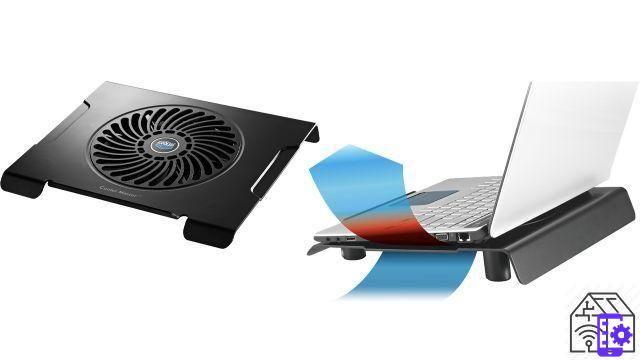To show the operating status of the graphics card more accurately, Afterburner offers a comprehensive monitoring function: all important information, including GPU core clock, memory clock, temperature, voltage and fan speed, is available on-screen in games, and real-time information is available in the Windows tray icon. All settings can be saved as 5 profiles, users can quickly switch to different settings with the hot keys.
The new version of Afterburner not only supports the latest NVIDIA GeForce 500 and AMD Radeon HD 6000 graphics cards, but also incorporates the video capture feature into the Predator game. Gamers can now capture all of your most intense moments in your favorite games and share them with the world on sites like YouTube.
MSI AFTERBURNER TUTORIAL
Installation instructions for MSI Afterburner Remote Server:
- To access your machine from your Android device, you must first download and install the remote server for the download links.
- Once you download the MSIAfterburnerRemoteServer.zip file, extract the file to your PC and run MSIAfterburnerRemoteServer.exe. Once installed it should appear in the system tray. Click on it and copy the IP address shown below (you will need it for the MSI Afterburner application).
Configuring the MSI Afterburner application
After downloading the MSI Afterburner App for Android on your Android device and installing MSI Afterburner Remote Server on your PC:
- Open the application and click on the settings.
- In the settings select ‘Host IP Address‘ and enter the IP address you got from the MSI Afterburner Remote Server (it should be something like 192.168.101.22:82).
- Once you enter the IP address, your Android device will automatically connect to your PC.

MSI DRIVER
** Some important notes for the owners of RADEON VII
- The kernel voltage slider on MSI AB is supposed to be locked on RVII, that is normal and by design. On RVII series cards, the AMD driver allows for a surge of up to 1.2V (1V by default) and voltage control is provided on MSI AB at the voltage/frequency curve editor level. So simply open the editor (either by pressing the VF editor button on the skin next to the kernel clock slider or by pressing + keyboard shortcut to open the editor) and you can adjust the voltage there.
- The temperature limit slider is also supposed to be locked by design in the RVII, it was part of the old AMD fan control algorithm. It has gone with the Adrenalin 2019 family of drivers when AMD introduced the fan curve adjustment approach. Therefore, it is no longer adjustable on the AMD controller and is supposed to be locked now.
- The voltage/frequency editor allows you to adjust frequencies and voltages independently for the 3 points of the V/F curve (or 3 P-States), however, the AMD controller and the RVII architecture put some restrictions on the curve editing approach. Therefore, the curve will be corrected according to the following limitations when applying it
- You can adjust the frequency independently for the first and last point only. The frequency of the midpoint cannot be adjusted independently, the frequencies are always interpolated linearly from the first point to the last point. Therefore, if you try to set the frequency for the midpoint, it will be corrected according to the above mentioned interpolation rule right after applying the new settings.
- You cannot set frequencies and voltages below the minimum (which is quite strict and very close to the default value). This puts some limitations on the downclocking/downvolting of the lower P states.
2 GPU temperatures displayed by the MSI AB hardware monitoring module are assigned to edge and junction temperatures. 4 VRM temperatures displayed are mapped to core VRM, SOC VRM and 2 memory VRM sensors. The AMD fan curve uses the junction temperature for the fan speed setting. - In contrast, MSI AB’s software fan curve implementation still uses the traditional edge temperature sensor. We will probably add the possibility of selecting the input temperature sensor for the fan curve software adjustment in future versions, but I am honestly not sure that it is worth the effort.
- Currently, the AMD GPU usage sensor is suffering from quite bad fluctuations of 0%->100%->0%. Similar problems affected some older GPUs in the past, but now it’s much worse in RVII. I think that’s what they mean by “overlapping performance metrics and Radeon WattMan meters may experience inaccurate fluctuating readings in AMD Radeon VII” on known driver issues, so there is hope to see a solution from AMD in the future.
- It is possible to get rid of these fluctuations by enabling unified monitoring of GPU usage in MSI AB properties, however, this option depends on the DirectX GPU usage performance counter and this counter requires the WDDM versions of the operating system and display driver to match. Current AMD drivers target WDDM 2.5 OS (updated October), so this option will only help if you have WDDM 1809 OS installed. Otherwise, you won’t see any GPU usage at all after you enable it.
MSI AFTERBURNER FREE DOWNLOAD
What’s new:
- Windows beta version updated to beta 16
- Android version updated to 2.2
MSI Afterburner 4.6.0 beta 16:
- Includes full support for RVII, including overclocking (which did not exist in the previous version of b15).
- Use the and + keys to select the next/previous point of the curve. This feature is useful for those who prefer to use the / keys to fine tune the frequency shift of the selected point instead of adjusting the point with the mouse cursor. We remind you that you can also hold down the key while tuning the frequency with the / keys to jump to the nearest 10MHz rounded frequency value.
- Press the ‘Enter’ key to edit the frequency offset of the selected point from the keyboard. Alternatively you can press + to specify the absolute value of the target frequency, so that the editor will automatically calculate the desired deviation.
- Slightly modified keyboard control interface for AMD implementation of the V/F curve editor. Previously it was possible to select P-State and adjust the frequency with the / or +/+ keys or with the / or +/+ keys. Now both frequency and voltage are set with the keys / or +/+ and the keyboard input voltage or frequency focus is selected with the keys
/
. The keyboard voltage or frequency input focus is now highlighted with the brightness of the selected point on the curve. The keyboard input focus also affects the new / + function, allowing you to enter the target voltage or frequency in both offset and absolute form.
- Similar to the NVIDIA implementation, you can now also hold down the key when dragging the V/F curve point on AMD systems. This will result in moving the entire curve up/down while preserving the offset of each point.
- Added support for undo/redo to the stress curve editor
Now the stress/frequency curve editor is saving up to 1024 last curve states during editing and allows you to undo/reduce changes with the + or + / ++ keys. - Undo history is discarded when applying the curve, forcibly re-reading it from the hardware with the key or switching to a different GPU in a multi-GPU system.
The number of recorded undo/redo steps is shown in square brackets in the title of the editor window. - The application properties dialog is now displayed in the highest style when properties are activated from a separate monitoring window and the “Always on top” mode is enabled.
- The NVIDIA Scanner components have been updated to the latest version, so the problem with NVML.dll should now be fixed.
MSI AFTERBURNER FOR ANDROID
The new Afterburner utility allows Android-based smartphones and tablets to adjust or monitor Afterburner settings on the PC via a Wi-Fi connection. In addition to monitoring temperature, voltage and fan speed, the utility can also be used for overclocking and overvoltaging. You can use the MSI Afterburner for Android to monitor and overclock your machine from your Android device. To use the MSI Afterburner App you must have the remote MSI Afterburner server installed on your computer.
Ideal for gamers who like to control the performance of their graphics cards, they can now do so via their mobile phone or tablet, even while playing FPS games, without having to use a separate screen. Key parameters can even be adjusted on the fly in specific test scenarios to make it even easier to break world performance records. You can even connect to your home computer and check how your graphics card works when you’re out and about!
ENTER THE GUMS UP UNIVERSE AND GET PROGRAMS LIKE MSI AFTERBURNET PRO FOR FREE, WITH THOUSANDS OF ADDED BENEFITS!


























